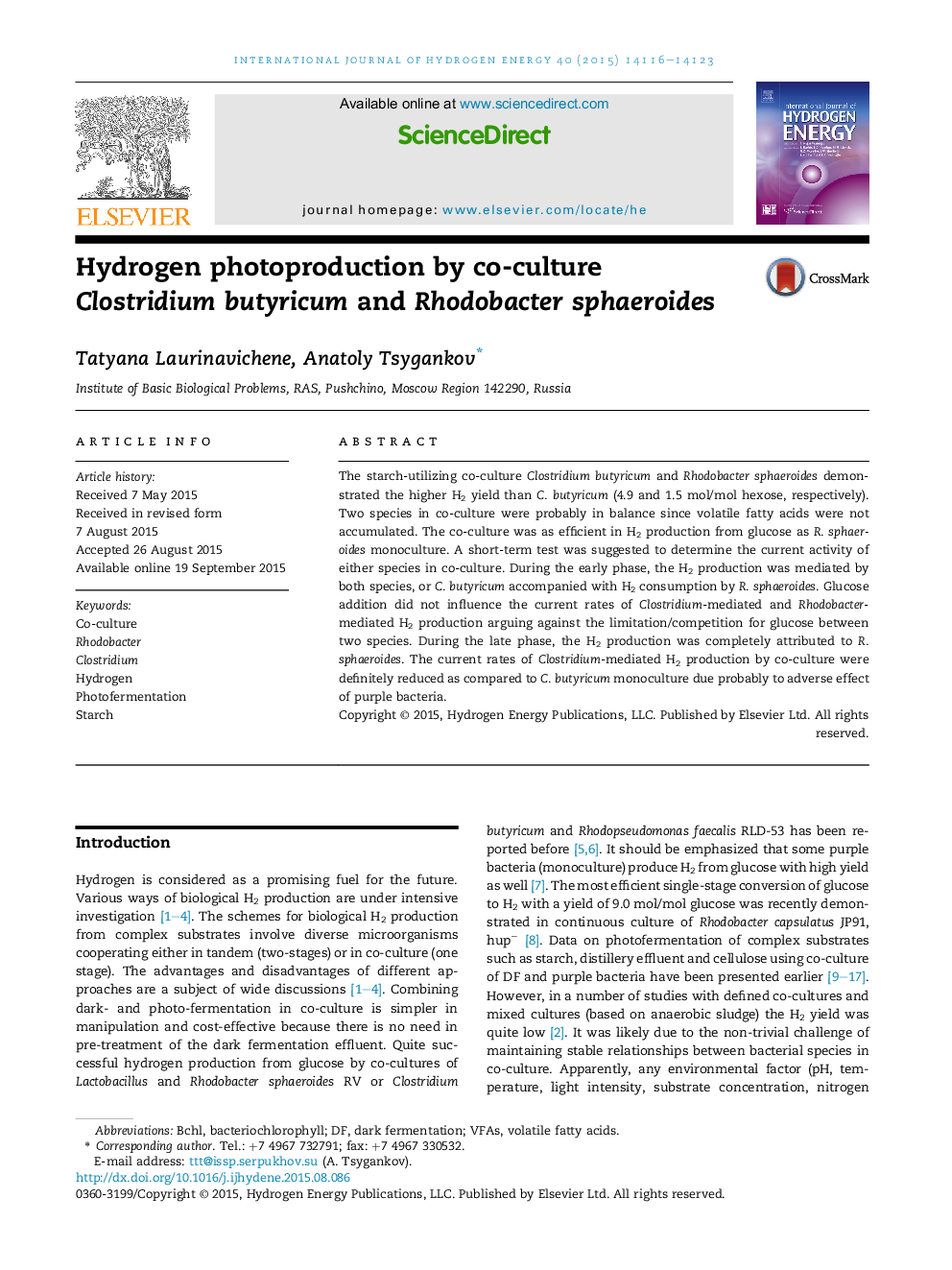| Article ID | Journal | Published Year | Pages | File Type |
|---|---|---|---|---|
| 1269140 | International Journal of Hydrogen Energy | 2015 | 8 Pages |
•Purple bacteria inhibited H2 production of C. butyricum in co-culture.•No VFAs accumulation took place at any stage of photofermentation.•Current activity of either species in co-culture was estimate using short-term test.
The starch-utilizing co-culture Clostridium butyricum and Rhodobacter sphaeroides demonstrated the higher H2 yield than C. butyricum (4.9 and 1.5 mol/mol hexose, respectively). Two species in co-culture were probably in balance since volatile fatty acids were not accumulated. The co-culture was as efficient in H2 production from glucose as R. sphaeroides monoculture. A short-term test was suggested to determine the current activity of either species in co-culture. During the early phase, the H2 production was mediated by both species, or C. butyricum accompanied with H2 consumption by R. sphaeroides. Glucose addition did not influence the current rates of Clostridium-mediated and Rhodobacter-mediated H2 production arguing against the limitation/competition for glucose between two species. During the late phase, the H2 production was completely attributed to R. sphaeroides. The current rates of Clostridium-mediated H2 production by co-culture were definitely reduced as compared to C. butyricum monoculture due probably to adverse effect of purple bacteria.
